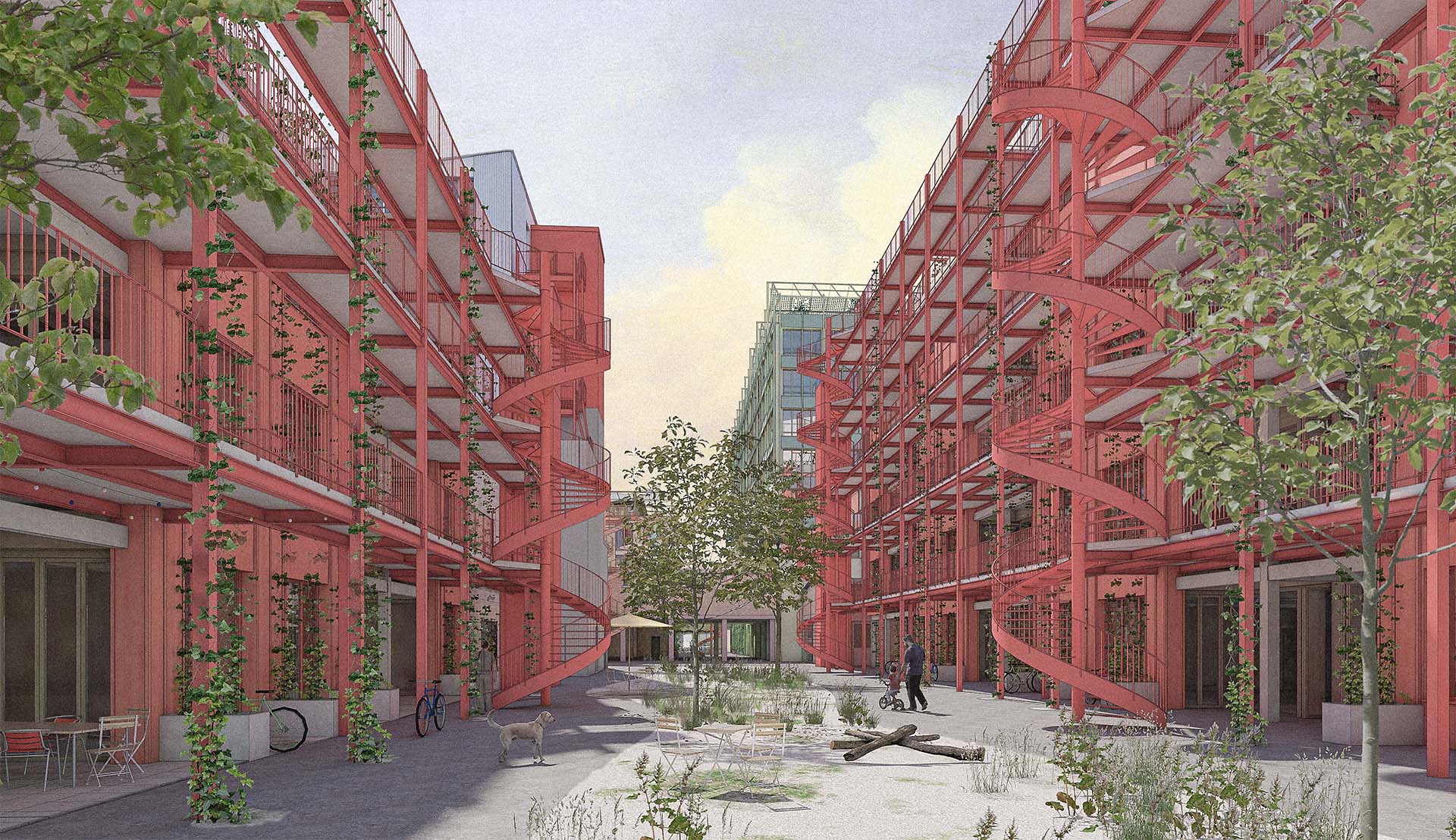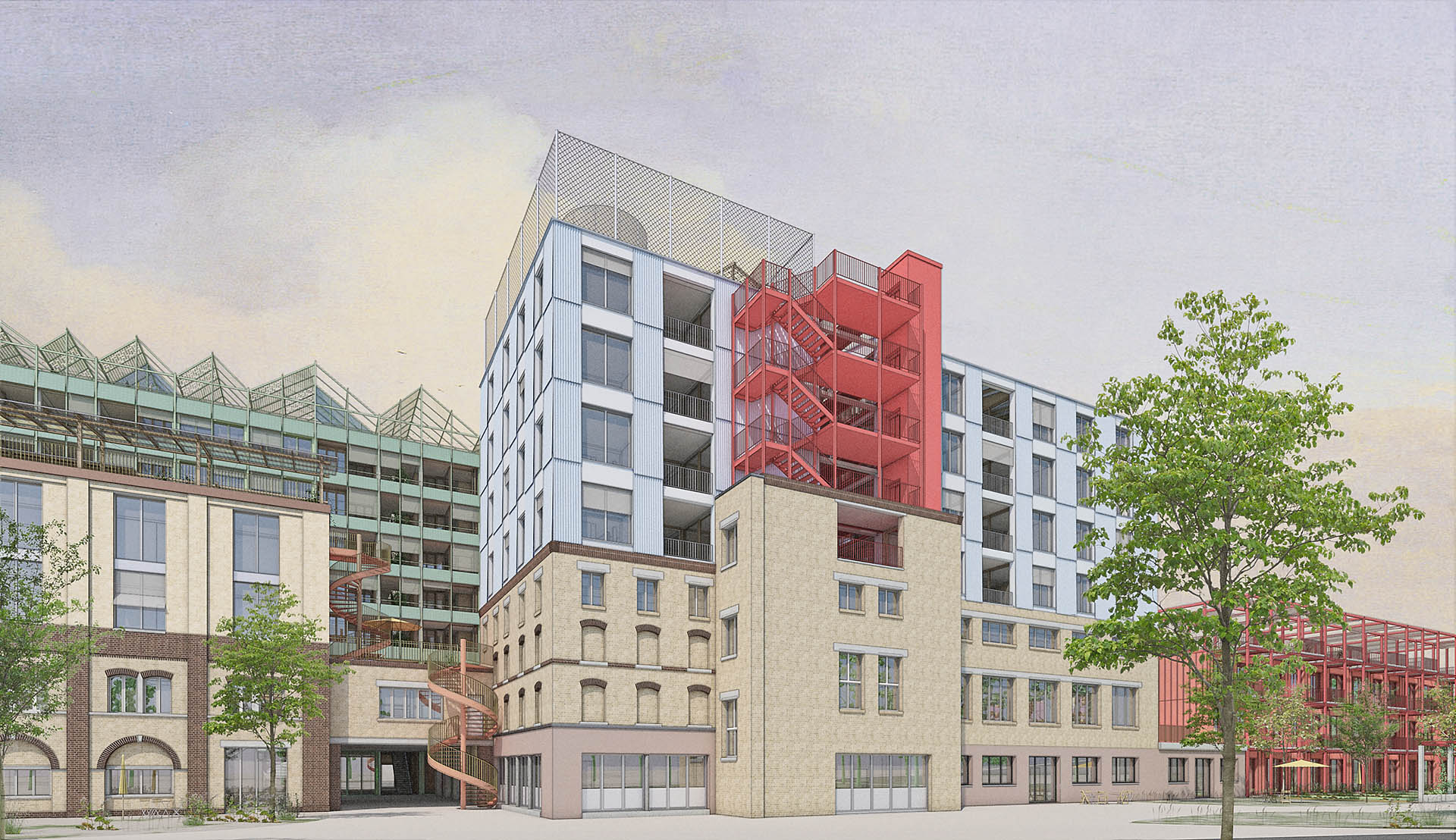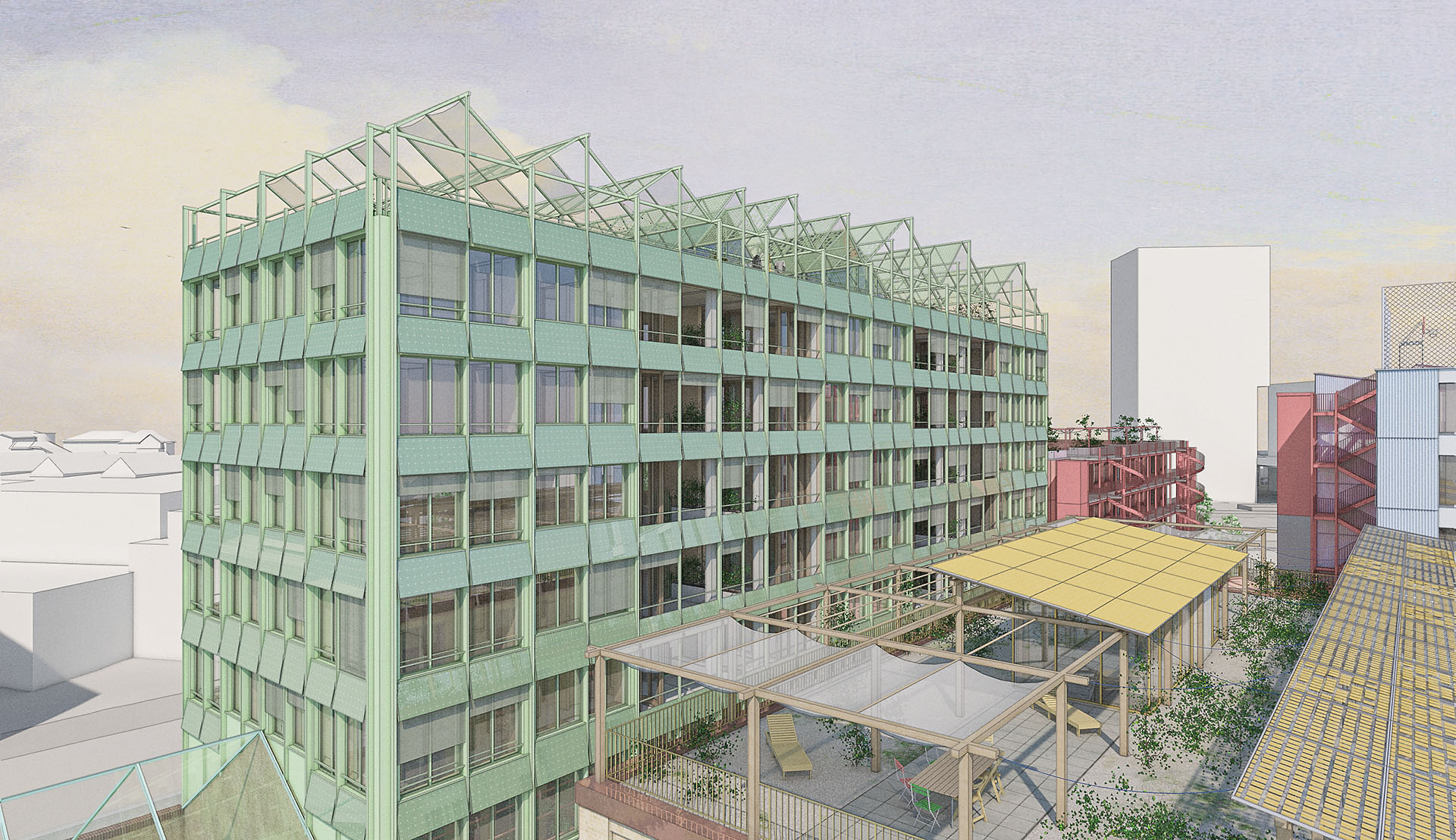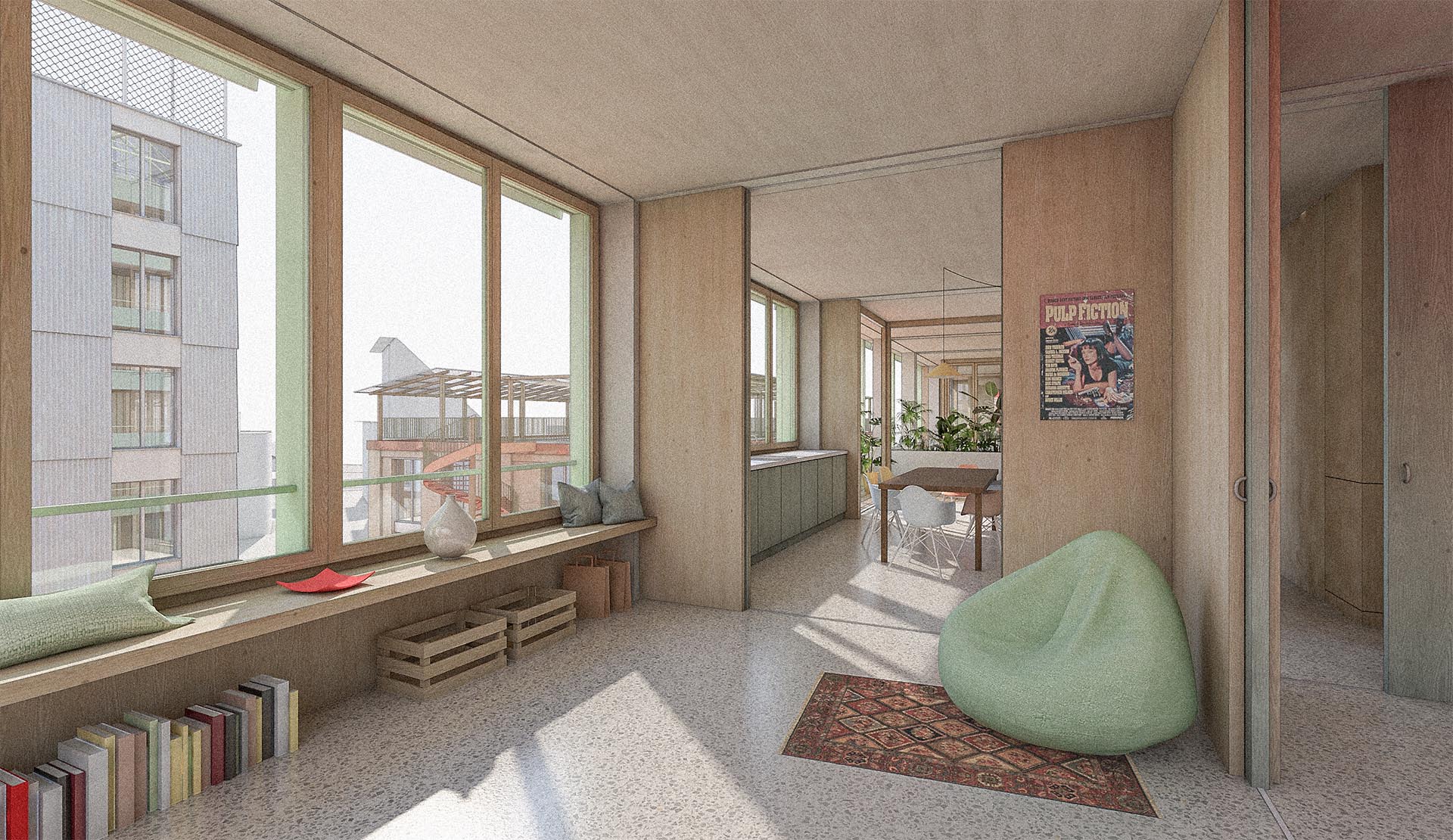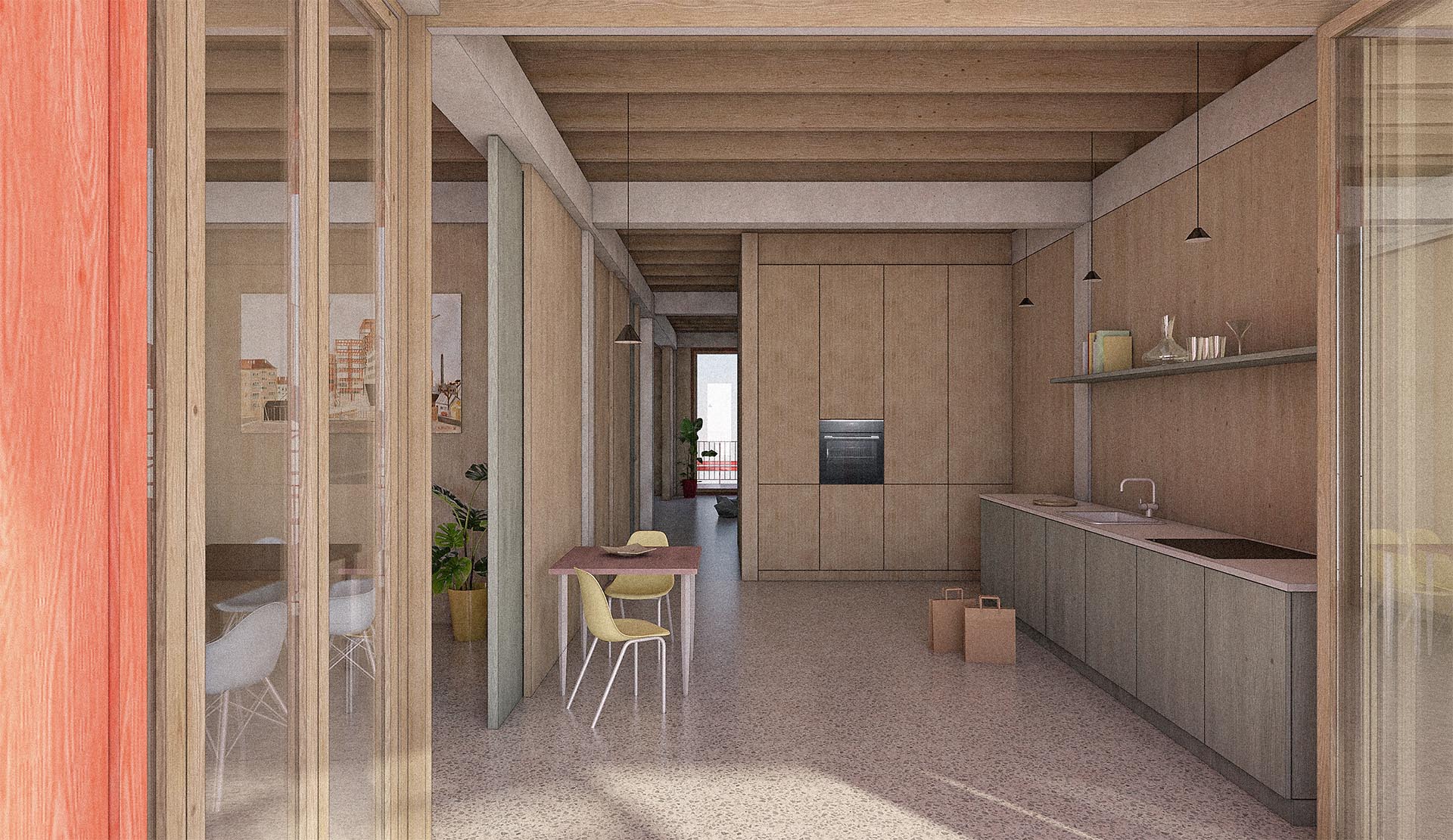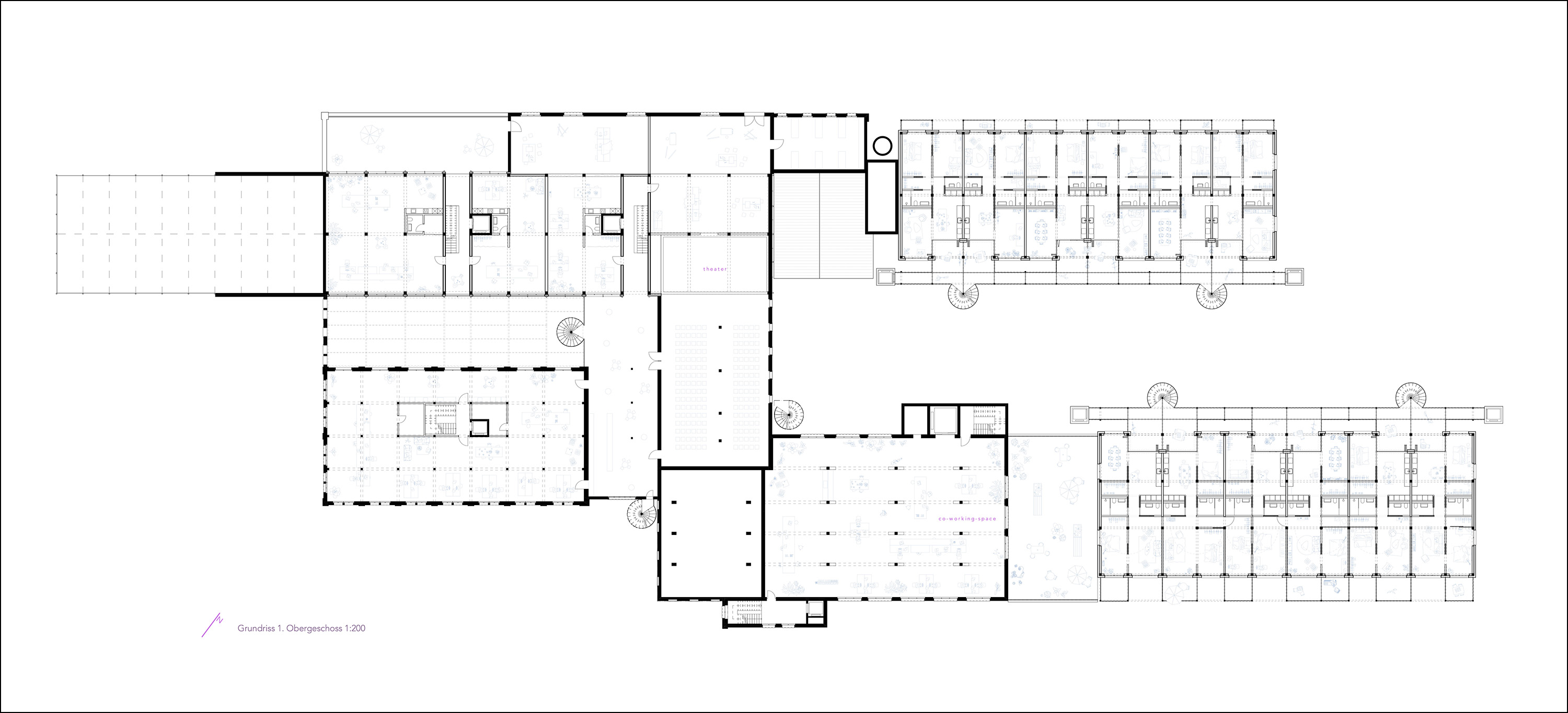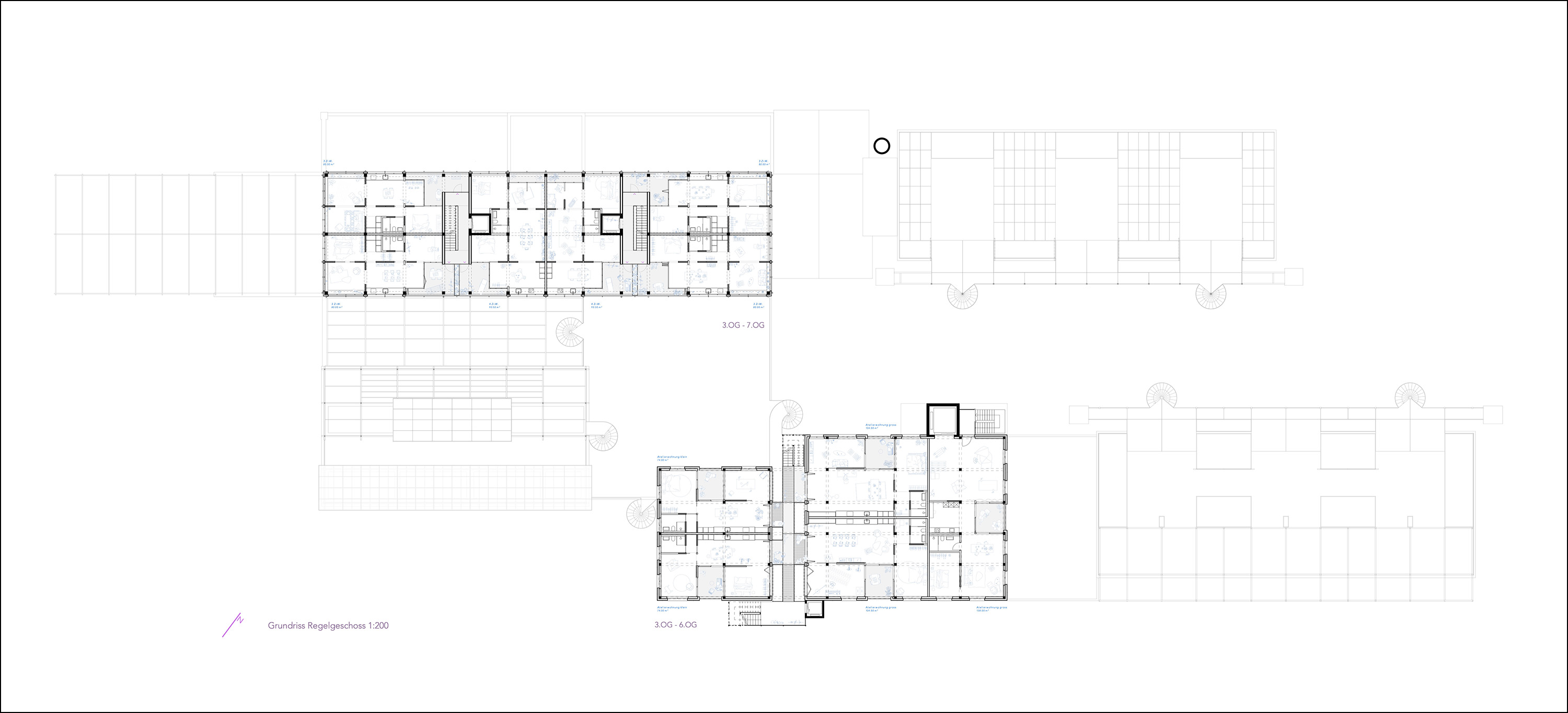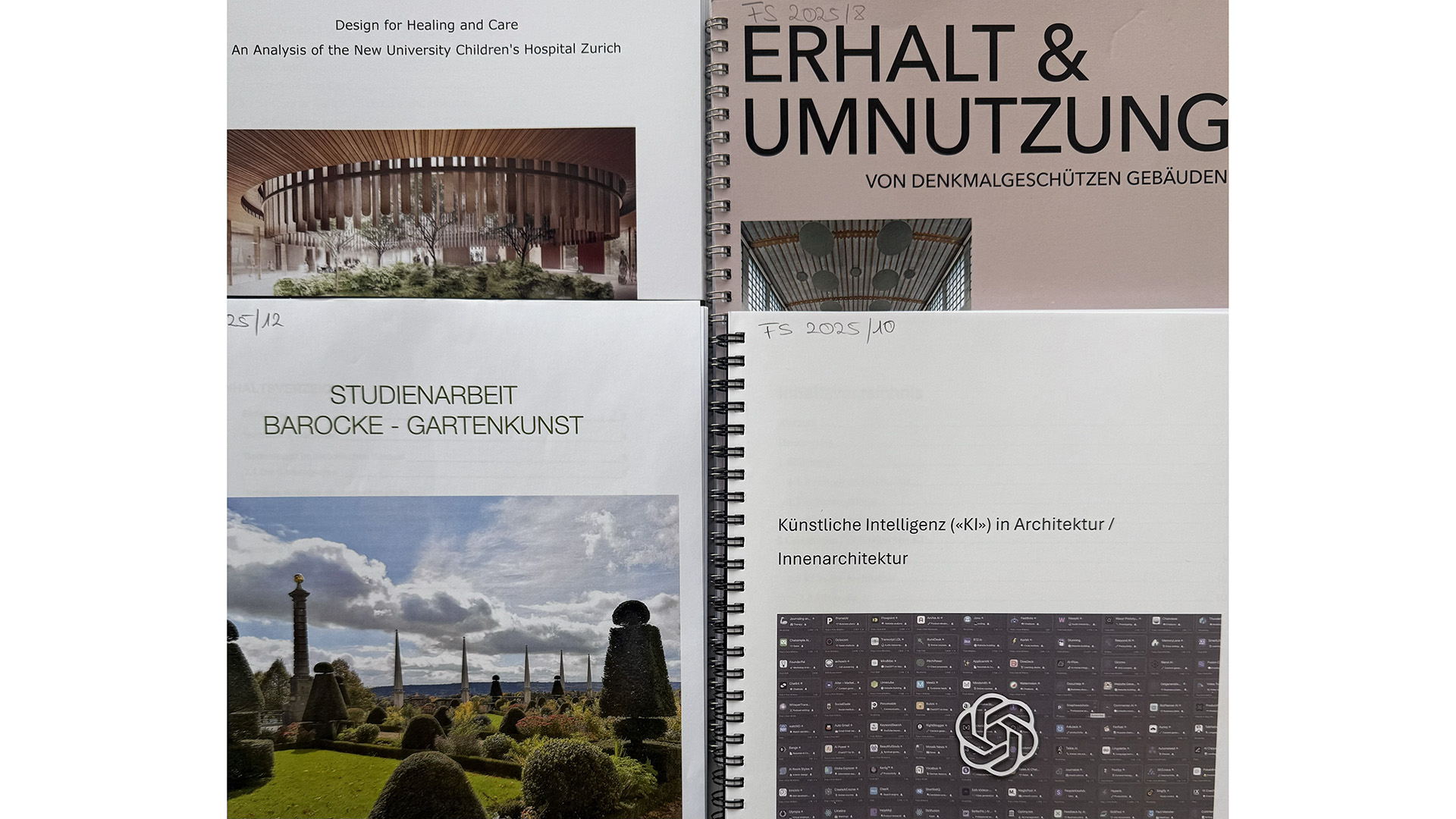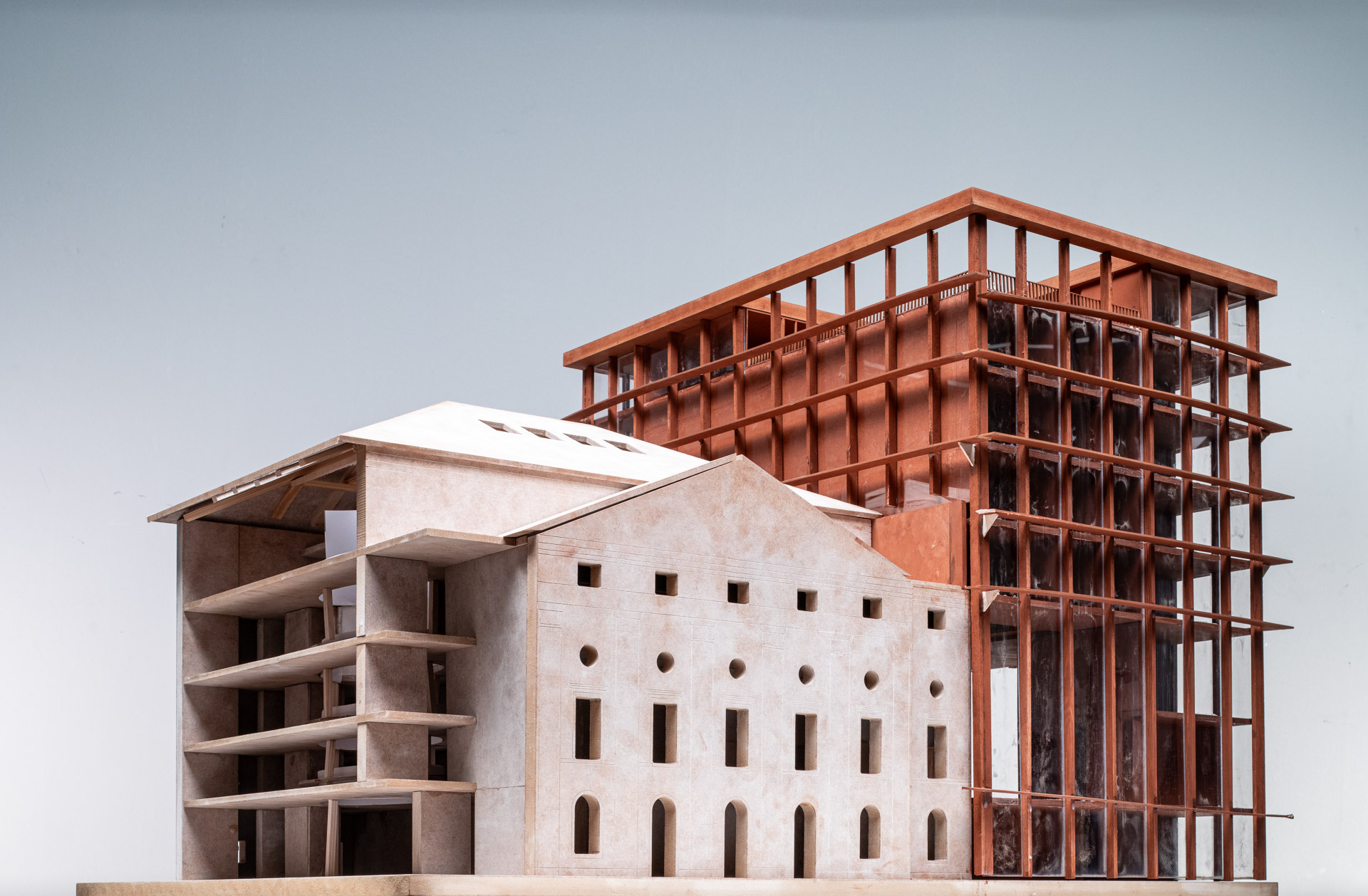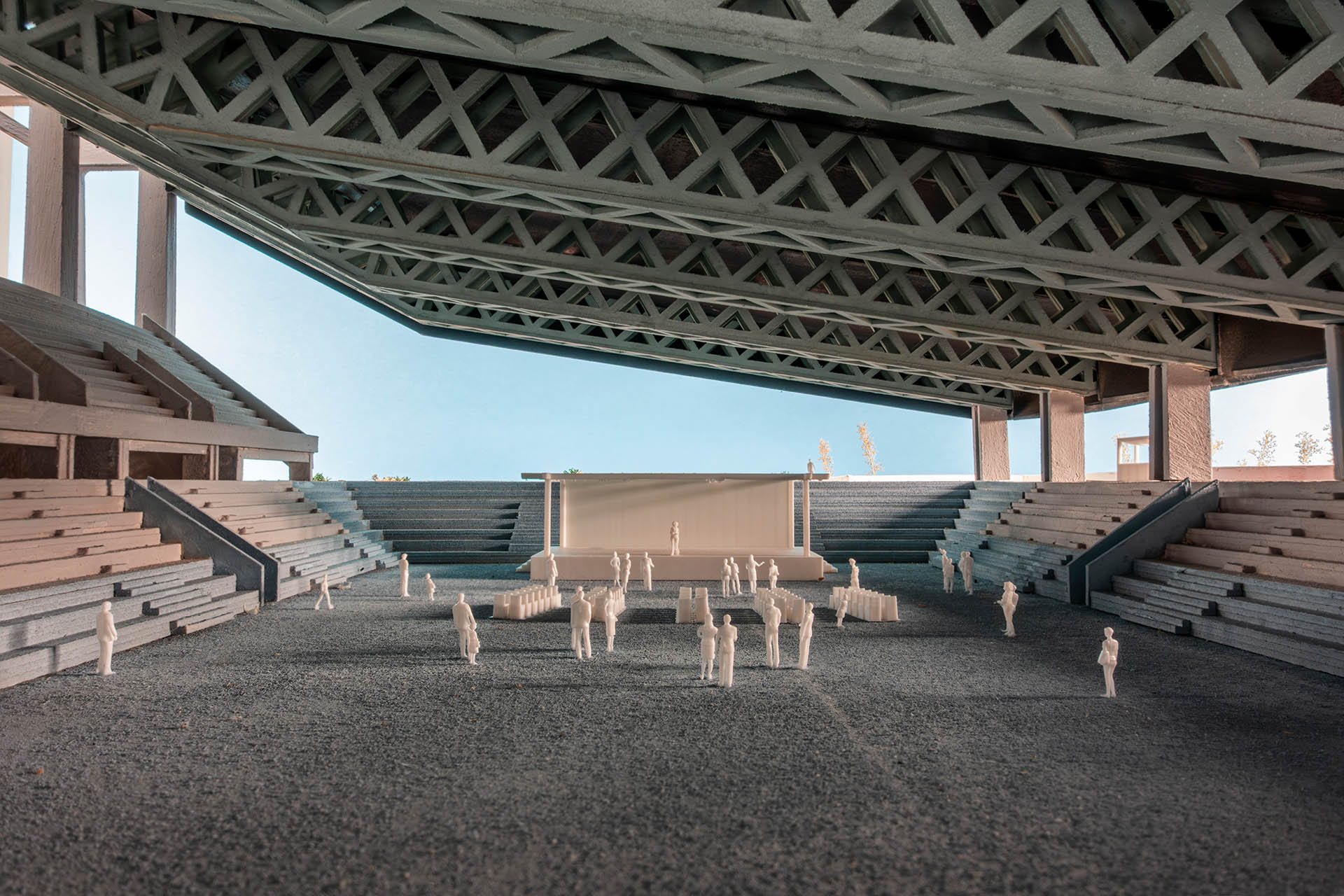Master Thesis Qendrim Gashi
Thesis topic
South of the ‘Winterthur Grüze‘ train station lies the eponymous district, one of the most important areas for development in the city, one that still has industrial and commercial character. It is reasonable to assume that the district around the train station will evolve into a second centre by 2030. The goal of the Master’s thesis is to make valuable contributions to the urban planning and architecture for a forward-looking, urban and green approach to work and housing. The first reflections, initially on urban planning, should discuss above all the relationship between new and existing buildings.
In the spirit of sustainability, increasing density in a very important hub in the centre of the city, while minimising the need for cars, makes it necessary to increase use substantially. The resulting conflict in dealing with the existing fabric necessitates taking a position of one’s own. In addition to integration into an already very heterogeneous but very urban context, one central question is how housing and workplaces can be reconciled.
Project by Qendrim Gashi
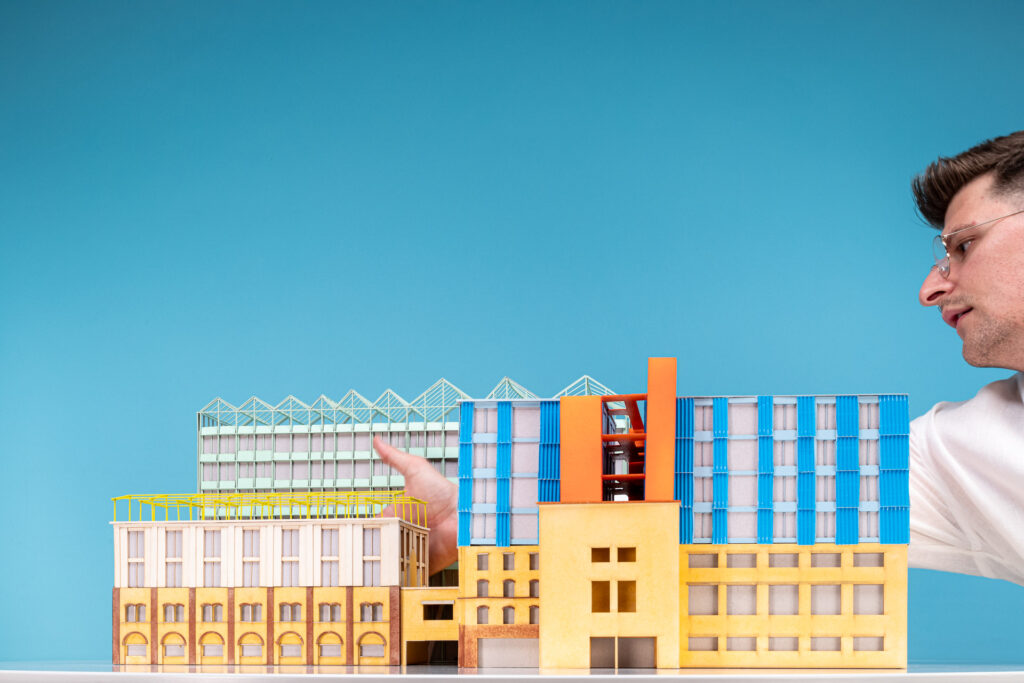
This project examines the design of a flexible structure, referred to in the book as an «intelligent ruin», that forms a permanent connection with the ground. Special emphasis is placed on preserving the existing building stock, and three strategies are developed to deal with it appropriately. By linking old and new as well as the conception of the intelligent ruin, this thesis project represents a possible answer to the current challenges of our time.
The book is divided into three chapters, each representing the approach of the thesis project: Encountering, Preserving, and Continuing to Build. The chapter, «Encountering», takes a closer look at the site and, in particular, the gelatin factory. The second chapter, «Preserving», discusses why the preservation and further development of a building are crucial. Arguments from the field of sustainable construction as well as the right to memory are considered. In the third part, the project draws on two references: the construction site paintings by Rudolf Maeglin and the Fun Palace by Cedric Price. Subsequently, the «intelligent ruin» grows out of the references. Themes such as the urban future, the opening of the gelatin factory and changeable living are also considered.
Model
Video presentation
Thesis book





